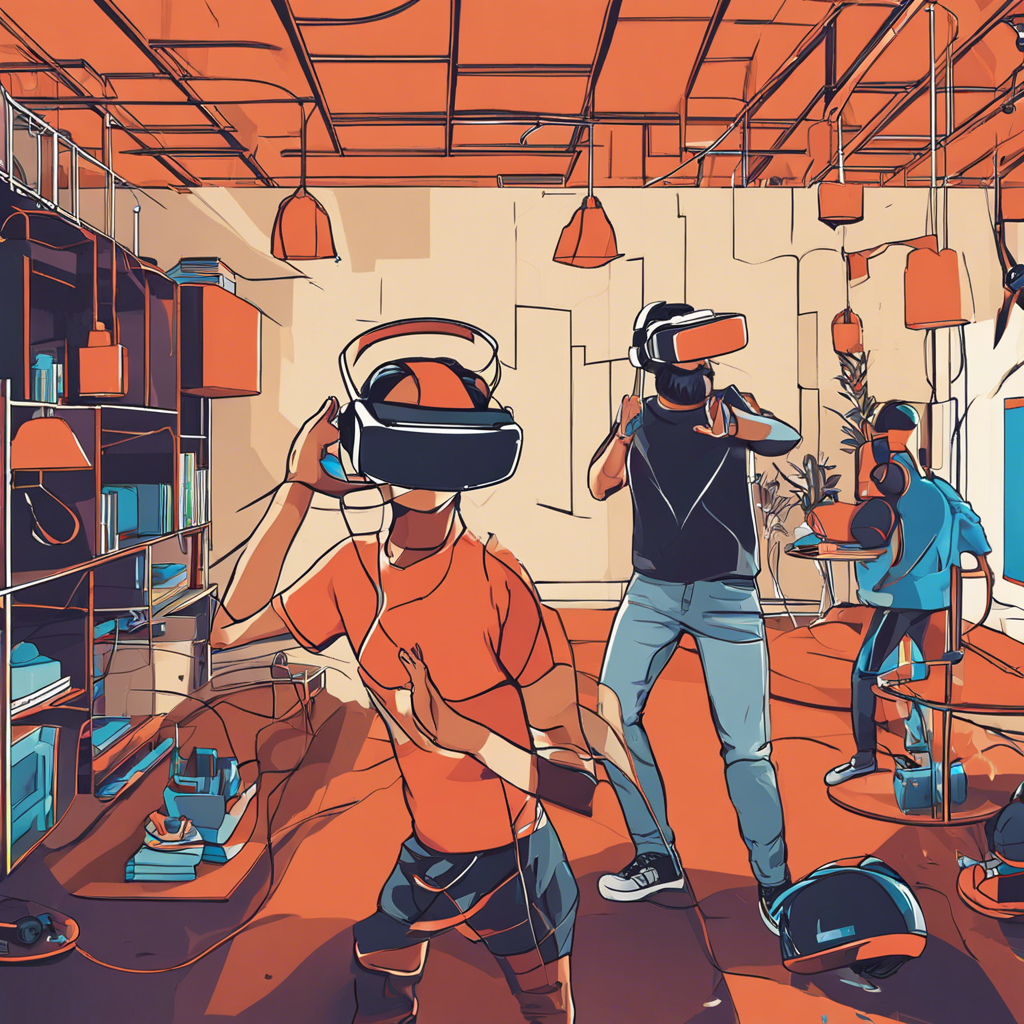As virtual reality (VR) continues to evolve and captivate the tech world, now is the perfect time for beginners to dive into this exciting realm. VR offers a unique and immersive experience, transporting users to virtual worlds and enhancing our interaction with digital content. So, if you’re new to this technology, what do you need to know to get started?
First, let’s talk about the hardware. To enter the VR world, you’ll need a headset. There are several options on the market, such as the Oculus Quest 2, HTC Vive Flow, and PlayStation VR. These headsets vary in features and capabilities, so choose one that aligns with your interests and budget. Some are standalone devices, while others require a connection to a PC or console. The standalone options are often more accessible for beginners as they offer a wireless experience and easier setup.
When selecting a headset, consider the type of content you want to engage with. Some headsets are designed for gaming, offering hand controllers and advanced tracking for an interactive experience. Others focus on 360-degree media consumption, allowing you to watch immersive videos and explore virtual environments. There are also VR headsets designed for professional use, like the HTC Vive Pro Eye, which is popular in enterprise training and simulation applications.
The setup process will depend on the headset you choose. Mobile VR headsets, like the Samsung Gear VR, are the easiest to set up. All you need to do is insert your compatible smartphone. Tethered headsets, on the other hand, require a connection to a PC or gaming console. This usually involves running a cable from the headset to the device, which powers the VR experience and provides the content.
Once you’ve set up your headset, you’ll want to explore the vast array of VR content available. This includes games, immersive experiences, educational simulations, and social VR platforms. You can find these through your headset’s app store or platform, such as the Oculus Store or Steam VR. Many experiences are free, while others require a one-time purchase or subscription.
Navigating the virtual world often involves using hand controllers or trackpads, which allow you to interact with the digital environment. You can also use your head movement and gaze to navigate menus and select items. It’s a unique and intuitive way to engage with technology.
Another aspect of VR that beginners should be aware of is the potential for cybersickness. This is similar to motion sickness and can occur when your brain receives conflicting signals about movement. To minimize cybersickness, ensure your VR setup is calibrated correctly and start with shorter sessions until you become more comfortable.
The possibilities within VR are endless, and the technology is constantly evolving. As a beginner, you’ll be amazed at the immersive experiences available today and the potential for even more captivating content in the future. So, take the plunge, choose your headset, and get ready to explore virtual worlds and interact with digital content in a whole new way.
One of the most exciting aspects of VR is the sense of presence it provides. When you don the headset and enter a virtual world, you truly feel like you are there. This sense of presence makes the experience highly engaging and sets VR apart from other forms of media. The technology has come a long way, and today’s VR experiences are incredibly lifelike and detailed.
You can explore a diverse range of VR content, from games and interactive stories to virtual tours of real-world locations. For example, you can walk the streets of Paris, visit ancient ruins, or even go on a virtual safari. The level of immersion makes these experiences highly educational and entertaining. They offer a unique way to learn about the world and gain new perspectives.
Another fascinating aspect of VR is its social element. With the development of social VR platforms, users can interact with each other in virtual spaces. You can meet friends or make new ones, attend events, and even collaborate on projects. This blend of social interaction and immersive technology opens up new possibilities for remote collaboration and socializing.
As VR technology advances, we can expect even more innovative and captivating experiences. This includes the integration of haptic feedback, which adds a sense of touch to the virtual world, and the development of more realistic avatars. The future of VR promises to blur the lines between the real and virtual, offering unparalleled experiences that will revolutionize entertainment, education, and communication.
So, if you haven’t already, now is the time to take the leap into the world of VR. With affordable and accessible options available, you can easily immerse yourself in this fascinating technology. Who knows, you may even become a VR enthusiast, always on the lookout for the next exciting experience or advancement in this rapidly evolving field.
